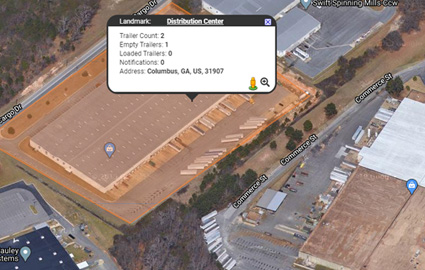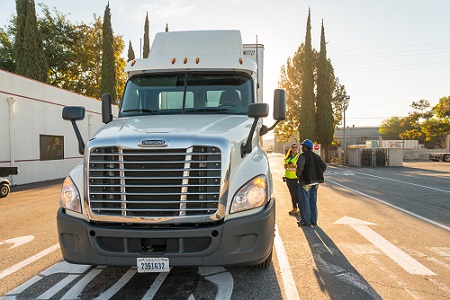
Landmarks = Better Fleet Management
Trailer tracking gives you a ton of data. We’re going to let you in on how you can get the most out of it.
Here’s the first tip: Landmarks = better fleet management.
First things first: What’s a landmark?
A landmark is a place where you want to manage your trailers.
Technically, a landmark is a set of latitude and longitude points that surround a geographic area where a trailer could be parked. Those points form a virtual boundary around that location.
Your trailer tracking technology should enable you to set custom landmarks and use them to better track the location of your trailers.
Want to locate your trailers along your route at places like these?
- Customers
- Distribution centers
- Shipping yards
- Truck stops
- Fuel stops
- Ports of entry
- Maintenance facilities
- Set landmarks for them.
Here are a few great ways landmarks make your job easier.
Landmarks help you use trailers more efficiently
Imagine no more manual yard checks, pool mismanagement or calling people to track down assets. That’s the power of landmarks.
When you use landmarks, you can answer all these questions:
- Where’s the trailer located within the landmark?
- When did it arrive or depart a specific location?
- Is it sitting dormant? If so, how long has it been dormant?
- Which trailers have been there the longest?
- Which trailers are currently available?
- Do you need more or fewer trailers in your pools?
A really good trailer tracking solution makes managing multiple drop locations in one city or region a whole lot easier, too. You can manage your fleets with separate landmarks set for each place you drop trailers.
Landmarks in real life: Improved pool efficiency
Here’s an example of a real-life customer using landmarks to improve the efficiency of their pool management.
A fleet manager wanted to optimize his trailer pool, making sure he had the right number of trailers in each and that the trailers were being utilized properly. By setting up landmarks for all the pool locations, he could see at a glance how many trailers were at each pool. He also looked at idle reports for each pool. (He’d subscribed to a report to get this data emailed to him automatically.) Using the data, he was able to re-balance the pools by moving trailers from pools with high trailer concentration to those that needed more trailers.
The fleet manager was also able to use these hard numbers to show some pool managers which pool “their” trailers were going to and why—the data showed they had too many.
Landmarks increase security for your trailers
It’s easy to see double when you’re staring into a yard full of hundreds of trailers from intermingled fleets. Many times, a driver may inadvertently grab the wrong trailer, leaving you to pay for a rented/leased trailer you can’t even use! Trip-based reporting can help you react quickly to those kinds of operational misdirects.
And trailers that sit anywhere besides one of your defined landmarks for an extended period of time can be prime targets for misuse. Who’s got those trailers and why? When you set up landmarks, you can easily tell where your trailers are and, more important, when they’re where they shouldn’t be.
Landmarks help keep you and your customers up-to-date on shipments
Remember when a rented/leased trailer would disappear from your sight as soon as it rolled out of your yard? If you were a trusting soul, that wasn’t a big deal for you. You knew that trailer would turn up eventually. Or you could run a report to see where it was some time in the recent (you hoped) past.
That type of report was old news…literally.
So how would you feel about trip-based reporting that tells you what’s going on with your trailer as things happen?
With that data at your fingertips, you can
- tell your customers when their shipment left, where their shipment is and when it’s likely to be delivered.
- monitor arrivals at and departures from landmarks to ensure you’re meeting obligations to your customers.
- develop a reputation as an on-time carrier who knows what they’re doing.
Your trailer tracking technology should be making you look smart. If it isn’t, it’s time to find out why.
Landmarks = better fleet management
Data from landmarks makes you more efficient as a fleet manager.
Once you start gathering data such as arrival, departure, and trailer dormancy periods from your landmarks, you can more easily figure out whether you have the right number of trailers to service those locations efficiently.
And this data can help you make decisions that decrease your overall cost. You may be able to
- reduce the number of trailers you rent, lease or buy.
- return idle rentals sooner.
- eliminate lost or misdirected trailers.
- protect your trailers from theft.
There you have it. Landmarks in a nutshell.
Excited about trailer tracking technology? So are we! Click here to learn more about the trailer tracking XTRA Lease provides.
Some links to get you thinking: